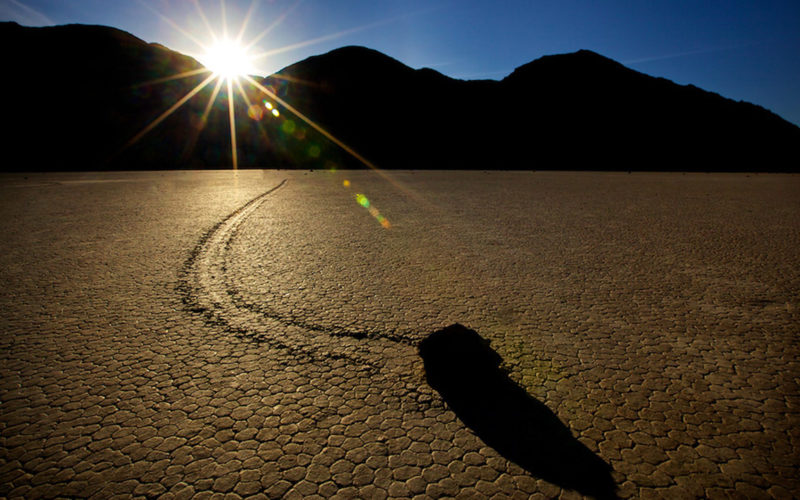Who says all things beautiful come with explanations? And this goes perfectly apt for Mother Earth. It sports so many weird and unexplainable features world over that some of them even give a glimpse of what lands of the aliens might be like. These places look so mysterious that plenty of theories are bound to come around. But while the world continues to run their train of thoughts through these mysterious lands, let’s just look at their pictures and be amazed over the fact that they are actually on the very Earth that we all live in.
1. The Richat Structure, also known as the Eye of The Sahara, is a conspicuous 50-km-wide feature resembling bull’s eye
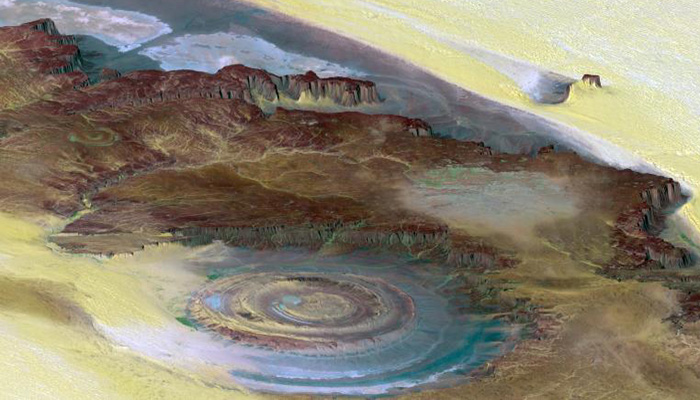
This feature is the only thing that stands apart on an otherwise vast featureless desert. Because of its vast diameter, it was initially mistaken for a possible asteroid crater. Now the scientists argue it to be a deeply eroded dome-like structure.
Location- Sahara desert, near Ouadane, west–central Mauritania
2. Etosha pan bears striking resemblance with Ontario Lacus, the lake on Saturn’s moon Titan
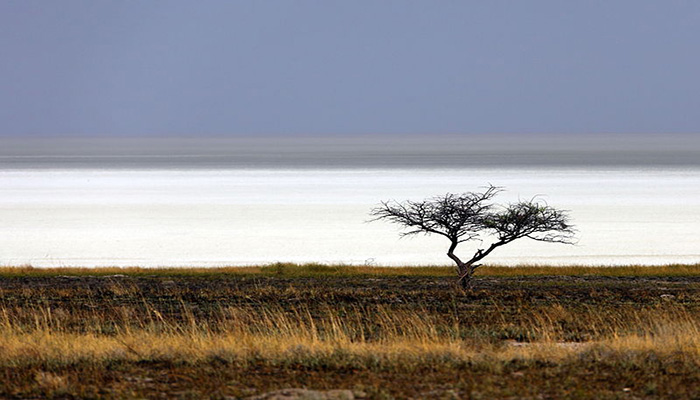
NASA’s Cassini spacecraft came up with the findings that the hydrocarbon lakes on Titan are behaving similarly to the salt crusted Etosha pan.
Location- Kalahari Basin in the north of Namibia
3. Atacama Desert- The desert with a Mars-like environment
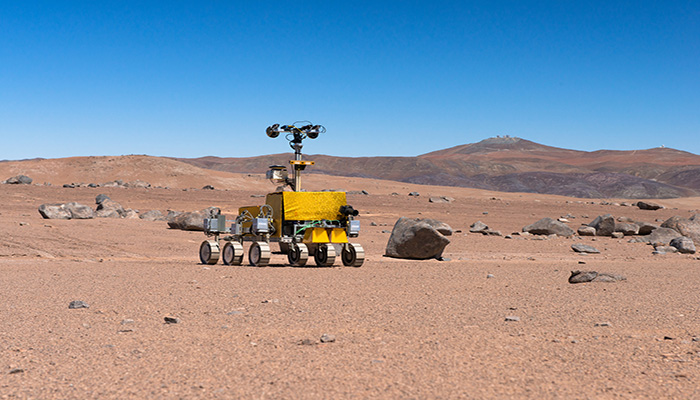
In the year 2008, Phoenix Mars Lander found the presence of perchlorates (salts derived from perchloric acid) on the Mars surface. Why is it interesting? Because perchlorates are also found in the Atacama. And their associated nitrate deposits have been known to contain ‘organics.’ Thus, speculating signs of life on Mars. Maybe this is one of the reasons why Atacama is being used as a testing site for the Earth-Mars Cave Detection Program, funded by NASA.
Location- Spans across Chile, Peru, Bolivia, Argentina
4. Rio Tinto river- Known for its deep red waters that offer for a sight like no other in the world
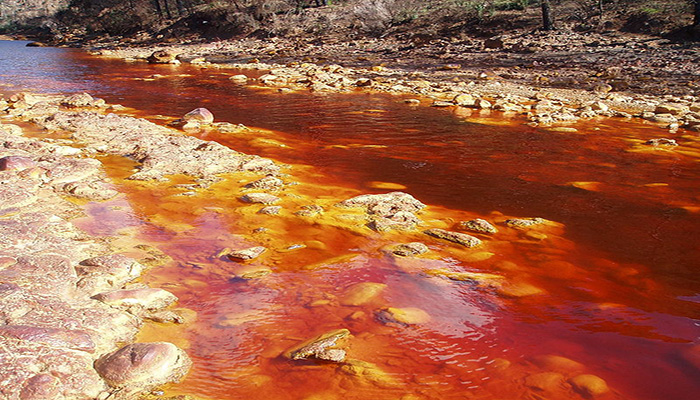
The waters get their deep red hues from the heavy concentration of dissolved iron in them, and the iron in them is probably the result of the persistent mining activities that have been going along the river bed since about 3000 BC! Also, the river is extremely acidic (pH2), and the recent findings of extremophile aerobic bacteria, are known to be the probable cause behind the highly acidic nature of the river.
Location- southwestern Spain
5. Devon Island, alleged to be the largest inhabited island on the Earth, was home to five scientists and two journalists who used the Mars-like environment of the island to simulate the probable life on Mars.
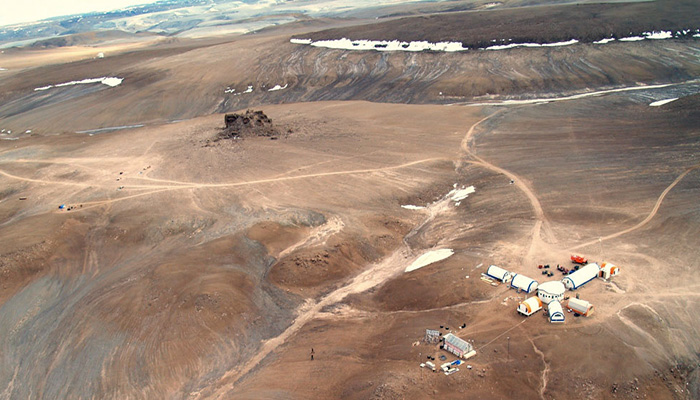
The team stayed there from April 2007 to August 2007, which is also considered to be the longest simulation program, comprising of 20 scientific studies.
Location- Canada
6. Kilauea Volcano, The lava flows of the Kilauea Volcano resemble the lava flows found on Venus
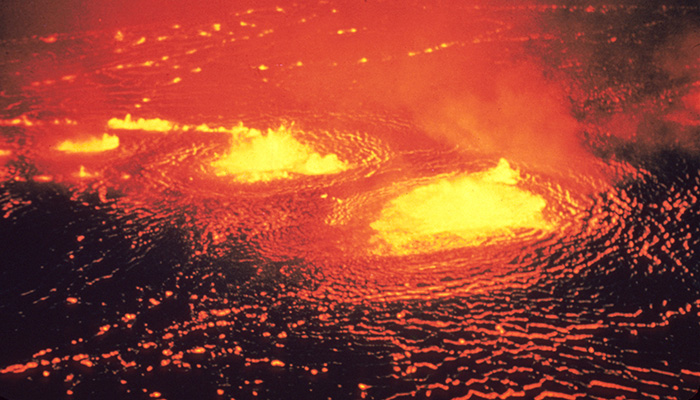
And not just Venus. The landscape of Kilauea is also speculated to share resemblances with Jupiter’s moon lo.
Location- Hawaii
7. Teide National Park is a World Heritage Site and another land used as an analog for studying chances of life on Mars
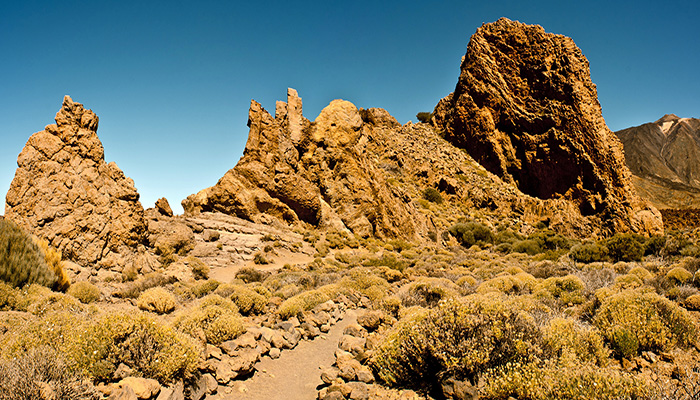
Its environmental conditions make it an ideal site for testing instruments that will supposedly be used for future Mars missions.
Location- Tenerife, Canary Islands, Spain
8. McMurdo Dry Valleys: The fact that little life exists in this inhospitable climate gives clues of life on the Red planet
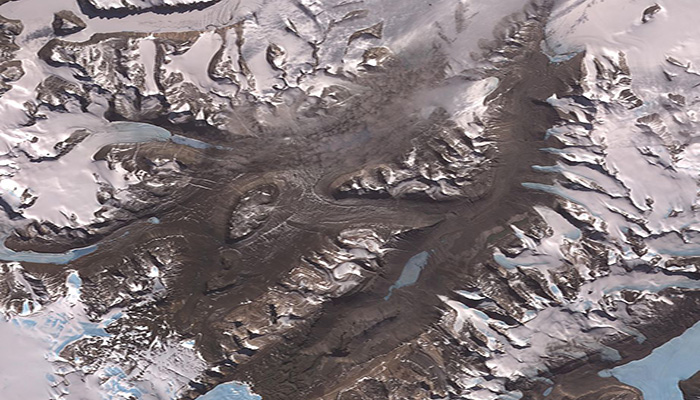
The valleys get their name due to the extreme weather conditions and the lack of snow or ice cover. Another probable reason behind them being so dry are the high mountain peaks that block the ice flowing towards the sea. The most intriguing thing, however, is that despite such harsh conditions, little life does exist here. The valleys are home to Antarctica’s longest river, Onyx. While the Onyx has no fish whatsoever, it does have algal blooms and microorganisms.. And according to the scientists, studying such life forms found in the river can give an insight into the life on other planets.
Location- Antarctica
9. Salar de Uyuni contains half of the world’s lithium reserves and looks this beautiful
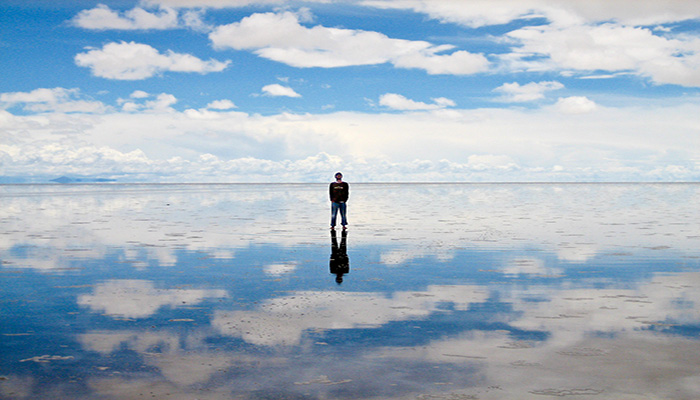
And yes, it is also the largest salt pan in the world.
Location- southwest Bolivia
10. Racetrack Playa- It has something mysterious called ‘sailing stones.’ Is it the aliens moving them? Well yes, but only in theories.
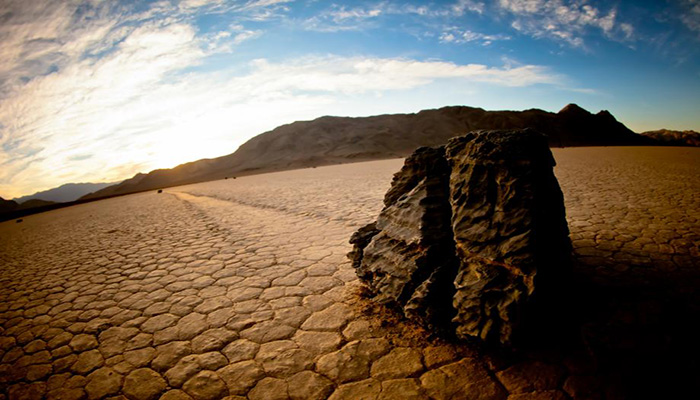
It is a picturesque dry lake featuring race track kind of imprints and yes, the strange geological phenomenon of sailing stones. The kind of trail the rocks leave behind gives out a theory that they move when the floor is more of a soft mud. To solve the mystery, the rocks were equipped with a GPS system. And the system revealed that the rocks moved as a result of the wind. But the fact that no one has ever seen this phenomenon take place in person, keeps the mystery alive.
Location- Death Valley National Park, California, Nevada
If aliens are keeping a watch, these must seem like the most hospitable places on Earth for them, that they might as well give visiting a thought.




